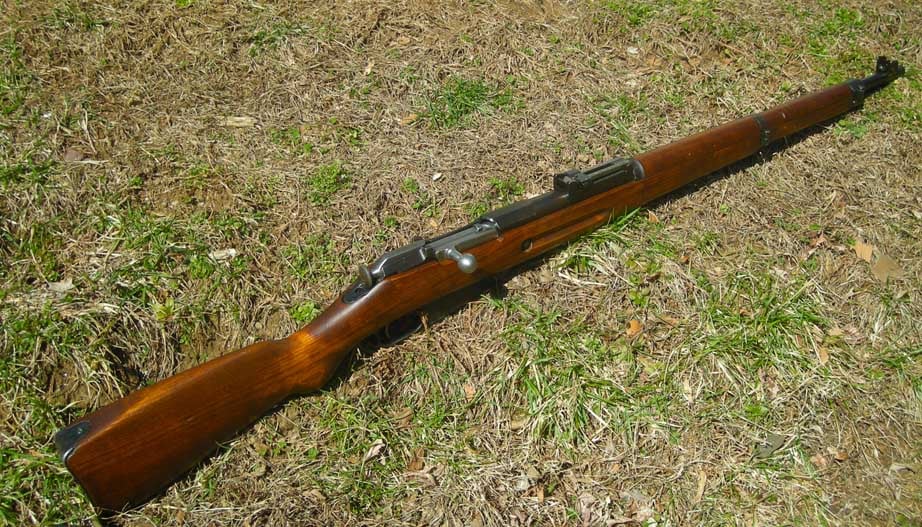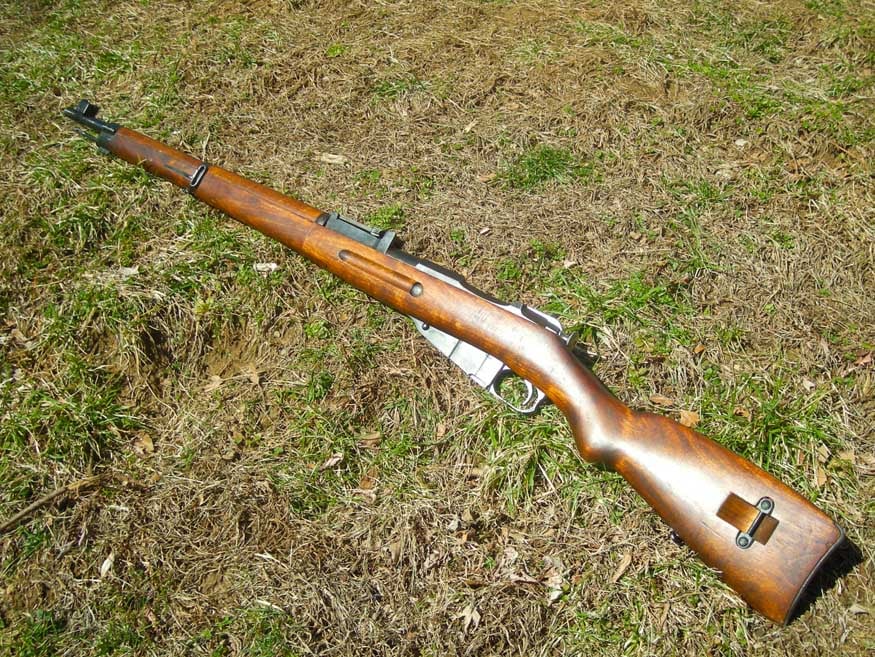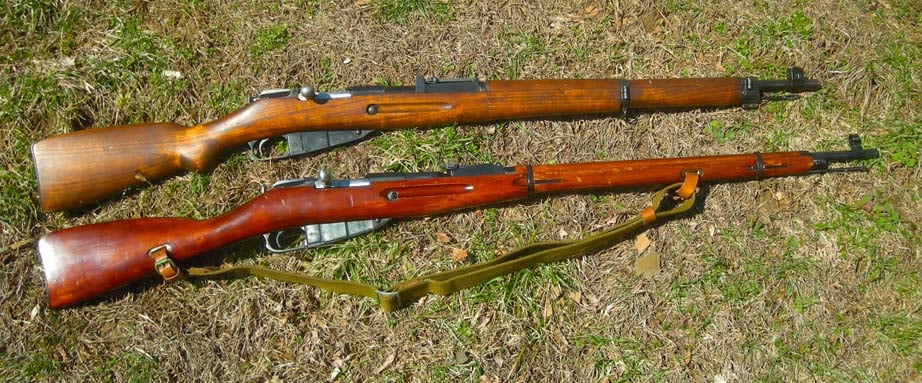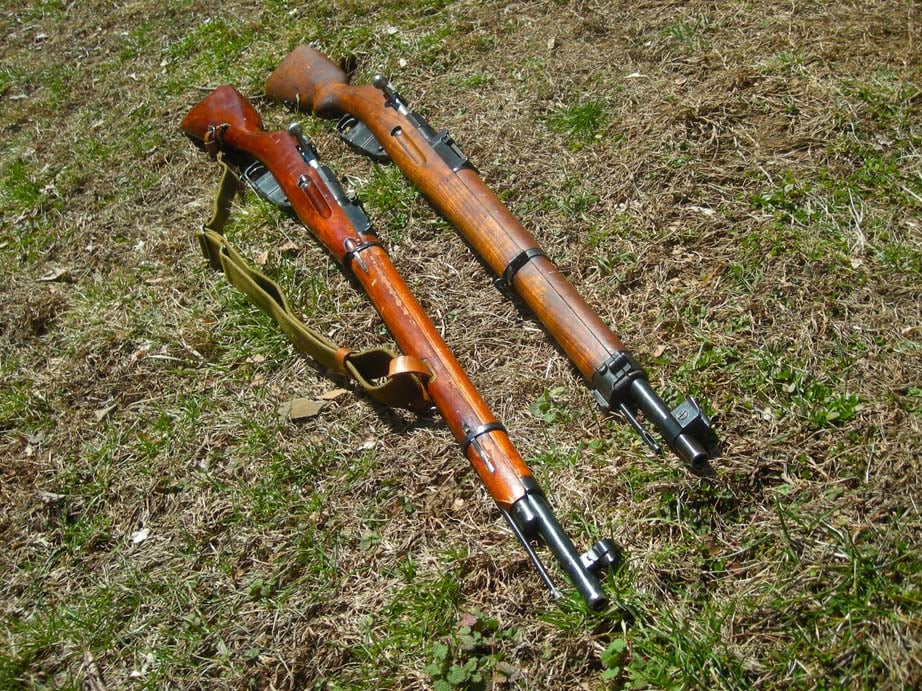Necessity, mother of invention
In 1936 the US Army adopted the M1 Garand, rendering every front line bolt action rifle obsolete. A reliable, semi-automatic battle rifle that fired a cartridge equal in power to the cartridges used by the rest of the world, had changed the face of warfare. While soldiers in other militaries used rifles that cycled manually, the M1 Garand fired off its eight rounds as fast as the soldier could pull the trigger. Despite this, many countries still held a number of bolt action rifles and continued to use them up into the 1950s; or in the case of India, the 1970s. Many countries refurbished their rifles, but no country did more to their old bolt action rifles than Finland. The pinnacle of Finn rifles, Mosin rifles and possibly the pinnacle of front line bolt action rifles, was the Finn M39.
When the Finns obtained their independence from Russia in 1919, they had an abundance of Mosin rifles that were captured from Red Russian forces or left behind in arsenals when the Russians departed. After the Great War many Eastern European countries had a large reservoir of rifles due to the Central Powers either leaving them behind or sending them as reparations. Both Poland and Czechoslovakia had begun to standardize the 98 Mauser rifle and the Steyr-Mannlicher M95 rifle, before either countries decided on the 98 Mauser and its 8mm cartridge. Poland rechambered many of their leftover rifles for the 8mm cartridge, but other countries sold or traded their Mosins to Finland, who decided to standardize the Mosin rifle and its M91 7.62x54mmR cartridge. They even began to load a variation of the old cartridge, the 7.62x53mmR, when domestic supplies of the M91 cartridge began to run low.
The Finns began to refurbish the rifles to higher standards than the Soviets. Many times the Army re-stocked or refinished the wood on the rifle, giving it a very distinctive look. They re-barreled their M91s with barrels from local sources, improved triggers, shimmed actions and counterbored the rifles if needed. In 1924, the Civil Guard gave their rifles a massive overhaul and created the M24 rifle. These M24 rifles had barrels made from local sources, SIG and Bohler-Stahl, in Germany. In 1927, the Army upgraded the M91 to the new M27 standard. They cut down the stocks and installed shorter barrels and new front sights with protective ears. This earned the M27 the nickname “spitz”. The Civil Guard’s M28 improved upon the Army’s M27 rifle, by working on the trigger and installing the “spitz” front sight along with a new barrel. The M28 was upgraded again and deemed the M28-30 rifle, with a new rear sight, a screw adjustable “spitz” front sight and the installation of an aluminum bushing in the nose-cap to increase accuracy.
By the mid 30s the Finns decided to standardize their rifles for both the Army and the Civil Guard. The Army first put forward their M35 design, but the Civil Guard rejected the idea for having excessive muzzle flash. In the end the committee found faults with all Finn Mosin designs. To that point, and the Army and Civil Guard both submit different suggestions to the committee. The Army wanted a stronger stock and did not like the finely adjustable sights of the Civil Guard. The Civil Guard, in turn, did not like the carbine length of the Army’s submission and found the accuracy of the M35 to be lacking. The committee eventually found the Civil Guard’s rifle to have better qualities than the Army’s design. Therefore, the Civil Guard gave the Army permission to make a few small modifications and called it M39. Unfortunately, due to lack of preparation only ten examples of the M39 rifle were produced with the outbreak of the Winter War.
The M39 rifle features the rear sight from the M28-30 rifle, adjustable for elevation from 150 meters to 1,000 meters. The rear sight also folds up into a ladder sight and is marked all the way out to 2,000 meters. The rear sight has several hash marks/notches which helps to make them much more adjustable than many other rifles of the period. Two large ears protect the front sight, which has a screw adjustable blade. The cleaning rod on this example is blued, but many were also finished in the white. The stock of the M39 is the distinctive feature that separates it from the rest of the Mosin family. A semi-pistol gripped, two piece stock made of Birch and finished with layers of wax and pine-tar which is often baked in while enjoying campfires. The stock is extremely durable and feels stronger than a standard K98, M1903 or Lee-Enfield stock. The buttstock features both a sling swivel and a side mounted sling cutout. The forward barrel band also features sling swivels on the bottom and side for soldiers who would either sling it over their shoulder for marching or for messengers and ski troops who would sling it across their back. The bolts are very smooth and are often a mismatch of parts from different rifles, in other words a forced matched. The bolt in this rifle features parts from Tula, Remington and Sestroryetsk. Triggers are a light, crisp two stage trigger. Barrels replaced from local sources, V.K.T. (Valmet), SAKO and Tikkakoski, are marked as such. Unlike earlier rifles which had tighter chambers for the 7.62x53mmR cartridge, the M39s were chambered for the M91 7.62x54mmR cartridge to take advantage of captured Soviet produced ammunition. Many older rifles had their throats opened up to accept this ammunition as well. Rifles that can take the M91 cartridge will have a ‘D’ marked on the barrel.
With the end of the Winter War, the Finns began to quickly rebuild their armed forces. This included the refurbishment of Mosin rifles and production of the M39 began in earnest. By the end of the Second World War, the Finns would wind up producing over 96,800 M39 rifles. Soldiers prized these rifles for their stronger, more ergonomic stocks than previous Mosins. Due to rifle shortages and the time constrains for producing the new rifles, many arsenals still continued to refurbish older M91 rifles and M91/30 rifles captured from the Soviets. The Finns also acquired excellent Mauser rifles from Sweden and Italian Carcano rifles from during the Continuation War. Wherever possible, the Carcanos were relegated to rear-echelon duty due to inconsistencies of ammunition supplied with the rifle.
When life gives you lemons
Finnish arsenals were hard at work producing the excellent M39 rifle from whatever rifles they could get their hands on. Many of these M39s were older M91 rifles, such as the example shown here. Anyone who has owned, fired or fondled any sort of Mosin rifle – and who hasn’t – will know that the date of manufacture and the arsenal are on the barrel shank. This one, made in 1942, is marked V.K.T. There is also a ‘D’ marking, indicating that the Finns opened up the throat to accept Soviet ammo and the ‘SA’ marking indicates that it was property of the Army. Unfortunately, removing the original barrel removes the easiest way of identifying who originally built the receiver. Under the rear tang of the receiver is the arsenal marking and a year showing when and where it was made, which is not present on this rifle. However, on the side is a small marking, either a ‘P’ or an ‘R’ inside of a circle. Should it be an ‘R’, Remington at Illion, NY built the rifle as part of a contract for WWI. If it is a ‘P’, the Manufacture d’armes de Chatellerault in France built the rifle, making it one of the earliest Mosins built. Sadly, the marking on this rifle is extremely small and illegible. On the top flat of the hex style receiver is another interesting marking: “AZF” meaning Artillerie Zeugs Fabrik. This marking indicates that at one point, the Austro-Hungarian forces captured it during the First World War and accepted it into service due to the chronic small-arms shortages suffered by all sides in World War One. This rifle has an incredible history. One can only wonder where it has been and what violence it has seen.
On the range the M39 outperforms other surplus rifles due to its unique features. The semi-pistol grip stock makes the M39 easier to hold, while the stock’s heavy weight absorbs recoil. Unlike every other Mosin rifle produced outside of Finland, the stock is not cut short on this rifle and actually fits the average American shooter. The light trigger and sights helps with accuracy. Many sights from this era are extra fine, but the open sights on the M39 rifle are fantastic and easy to see through. Another nice feature is the adjustable front sight via a screwdriver. Most sights of the era were adjusted for windage by drifting the front sight. The 7.62x54mmR posses ballistics similar to the .30-06 Springfield cartridge and earned the nickname “Russian .30-06.” It is a hard hitting cartridge that has a variety of surplus, match target and hunting rounds available. The M39 will perform admirably hunting or target shooting. The only limiting factor of this Finnish masterpiece are the sights; the shortest distance they are calibrated for is 150 meters. Shooters will have to determine the comeuppance of the round at any shorter distance to accurately hit targets.Weight will also be a factor if you decide to take it hunting.

The ultra-clean metalwork and close fitting stock show the Finn’s love their rifles (Photo by F. Borek)
Purists only, please
Please, resist all urges to put this rifle in an aftermarket stock or scoping it. Part of the rifle’s great accuracy is from shimming the action; you will lose accuracy should you do anything to it. Also, these rifles are not imported anymore and they’re getting harder to find with each day. The rifles produced from 1939-1945 had original wartime stocks and a beautiful grain structure, not seen in many other surplus rifles. You can tell whether the stock was made pre-Continuation War, during the war or post-war due to the differences in the stock splice.
In the late 1960s to the early 1970s, when the Finns decided they needed new training rifles, they explored all options and eventually decided to go back to Ol’ Reliable. Using older rifles and left over parts, SAKO began to produce the M39 for use as a training rifle. These later M39s were built to the exact same specifications as the older rifles and are thus exactly the same. They provide the same exceptional performance that the older rifles provide. When the Finns needed a new sniper rifle in the 1980s, again, they went back to Ol’ Reliable and began to build a modern sniper rifle on old Mosin actions; many of them antiques and still bearing the markings of the Czar. These rifles are still in service today and fire the 7.62x53mmR cartridge.The Mosin rifle provided decades of reliable service for the Finns up until the 1990s and the M39 was the creme of the crop.
In my opinion, the M39 is the finest general issue bolt action rifle ever made. The combination of accuracy, ergonomics, unmatched reliability and durability, along with its battle record and length of service, make it stand on top. Some may argue that other designs are better, but these rifles lack the ergonomics and quality sights of the M39. They also lack a powerful cartridge, durability and were not battle tested. While other rifles might be proficient in one regard, the M39 is outstanding in all regards, except for speed. Finland was the only country at war with the Soviets that did not see any Soviet military occupation or a Soviet backed change of government after the war. The fact that the Finns saw no Soviet occupation was in no small part thanks to their soldiers and their M39s. The Finn M39 is the finest of all the Mosins and the finest of all military bolt action rifles. If you can own only one surplus rifle, make it a Finn M39.
The post The most deadly Mosin in the world, the M39 appeared first on Guns.com.



